Episode 97: Board Meetings | The Art of the 2nd Try Send
Sending a route 2nd try is NOT THE SAME as the 2nd Try Send. The difference isn't even subtle. It's a whole different animal.
In this episode Nate and I discuss the What, Why, How, and When of the extremely valuable skill of the 2nd Try Send.
Learn it. You'll be glad you did.
FULL EPISODE TRANSCRIPT:
Kris Hampton 00:00
Hey everybody, Kris here. I just wanted to give you a couple of quick notes on some upcoming events before we get started. This week is the week of the International Climbers Festival here in Lander and Nate and I are here in town all week. We'll be at a lot of the events. On Friday, July 13, we'll be at the Lander City Park. During the Trade Fair, we'll have a table there we'll have shirts, Finger Care Kits, Process Journals, we'll be around to answer questions. Also during that day, as part of the Yakima Skyrise Sessions, I'll be moderating a training panel with Steve Bechtel from Climb Strong, as well as some folks from Training Beta. And then immediately after the panel, we'll be over at the Black Diamond booth for a happy hour. Free beer. Free Lacroix. And it'll be a Talk With a Trainer happy hour at the Black Diamond booth immediately after the panel. Also later in the Skyrise Sessions, at 5:20, I've been working on a project here in town with Amy Skinner, Mei Ratz, and Sarah and Hannah Skinner. So it's a storytelling event called the Houlihan Narratives. We're doing a climber edition, with the only prompt for the short four to eight minute stories being the word "float". And I believe Paul Piana will be there to tell a story. So you should definitely stick around and check that out. Also, I mentioned in this episode that we've got movement assessment sessions in The Machine Shop during the festival. There's a link in the show notes for you to sign up for those. So please check that out. And if you see us around the opening party or the art fair or any of the other events, please say hello. We're going to try and carry around stickers throughout the whole event, so if you want a sticker, hit us up, say hello, grab some stickers. Alright. See you guys there.
Kris Hampton 02:37
What's up, everybody. I'm your host, Kris Hampton.
Nate Drolet 02:41
And I'm Nathan Drolet.
Kris Hampton 02:42
And together, we form the Real Slim Shady because we're back again. And I'm back because I've been away from the podcast. I've only been constructing in the Machine Shop, banging my head against the wall, so to speak, and literally a little bit. But it's coming along. It's almost done, which I'm very, very excited about because I can get back to the things I enjoy doing way more.
Nate Drolet 03:14
Yeah. And it's looking great.
Kris Hampton 03:16
Yeah, and it's gonna feel nice too now that we've closed it in and insulated it, instead of 1000 degrees in the Wyoming summer. What are we gonna talk about today?
Nate Drolet 03:29
Rock climbing.
Kris Hampton 03:30
That's a good thing to talk about, though I don't know anything about rock climbing right now. I know mostly about constructing. So if you want to talk about how to cut drywall angles, I can talk to you about that.
Nate Drolet 03:40
On point.
Kris Hampton 03:43
So I think the topic today is going to be the art of the second try send. And that might sound to the uninitiated, a little bit obvious, right? But I think most people's second try send is something entirely different from what we are talking about.
Nate Drolet 04:09
It's lackluster.
Kris Hampton 04:10
Yes, very lackluster and most, for most people it's, you know, a small mistake on a flash attempt or
Nate Drolet 04:19
Messed up some beta.
Kris Hampton 04:21
Yeah, it's that simple. And then you can just do it really easily on your second go and you move on. And that's not at all the thing that we're talking about. How would you describe the second try send.........as we see it?
Nate Drolet 04:40
As we see it, it's more of a tactical strategy of trying to choose something that's fairly difficult for you and going up it once using as many tactics as you can and really breaking down that route to the best that you absolutely can so that when you pull on for the second go, you have absolute confidence to try and send it.
Kris Hampton 05:01
Yeah, except for rubber knee pads, we don't approve of those tactics.
Nate Drolet 05:04
Yeah. Yeah. Those are awful.
Kris Hampton 05:08
Actually, we approve of those quite highly, when necessary. Yeah, exactly. And it, what level should it be at? You said quite difficult for youh. Where do you see that level being?
Nate Drolet 05:21
I think, so I put a bit of thought into this, I think it can be anywhere from, you know, so typically, the idea with onsighting is that you should be able to onsight, your max onsight should be four letter grades below your hardest redpoint.
Kris Hampton 05:36
Right.
Nate Drolet 05:36
I think for a second go send, like, three to four letters away from your max send is like a good spot to like go for. But um, I mean, yeah, two and even like one underneath, I think it's completely fine. Like, there's times where if something fits you. Like, I've had a time where I've been able to second go something just one letter below my max, which for me was like, like, had someone else not put the idea in my head, like, I probably wouldn't have even tried it, because that seemed intimidating at the time.
Kris Hampton 06:04
Yeah, totally. Yeah, I agree with that number. I think if you're a really great onsight climber, then then it's going to end up being right around your onsight level or a little bit harder. If you really suck at onsight climbing, but you're really good at redpointing, then your second go send could be considerably harder than your best onsight. Actually, you know, if you have really great redpoint tactics already, and you can apply them to the second try send, then you might be second try sending you know, two or three numbers below your, below your redpoint level. So it should be hard for you. That's what that's what we're saying.
Nate Drolet 06:56
Yes.
Kris Hampton 06:57
And when you're approaching a second try send, why don't you want to try and just onsight it?
Nate Drolet 07:07
Because it's hard.
Kris Hampton 07:11
And if you do try and onsight it, then do you automatically switch to the second try send?
Nate Drolet 07:16
You can but man it's kind of hard to do.
Kris Hampton 07:18
Yeah, I think so too.
Nate Drolet 07:20
There's a lot that can go wrong with that. I think something that everyone kind of goes through this of either like you flash or you onsight climb or you flash or onsight through a certain section and in your mind, you're like okay, I did that first try like that means I should be able to repeat it. But you forget just how hard you had to try the first time.
Kris Hampton 07:44
Right.
Nate Drolet 07:44
And man, with onsighting routes, like it's, it's comical, like this happens to everyone. It's like, Oh, I nearly onsighted and I fell going to the top and I just, you know, slipped going to the anchors. Like I should do it next go and it takes you like five tries, because you never climb that confidently, that with that much commitment. You don't try as hard because you keep trying to have it just feel easy.
Kris Hampton 08:04
Right.
Nate Drolet 08:05
So it's tough. And it depends on how high you fall on an onsight. Because, you know, at certain point, you have to say, like, do I backtrack? Do I retrace my beta? Like, do I check to see if I can do something better down low? What are your thoughts on that?
Kris Hampton 08:20
I'm glad you just said it depends on where you fall. Because I think if it's you know, if it's a route that starts with a hard boulder that you're trying to onsight and you fall at bolt number two, sure by all means go into second try send mode. But when you fall up high, I, most of the time, just go straight out of second try send mode. You know, I, it more often than not, it ends up being another failed attempt and I've talked about this on the podcast before. So my tactic, if I fall high on an onsight attempt, is to not get on it again that day. Next time I'm at the crag I go, I approach it like a second go send but as an as a totally new route. So I'll go up it as part of my warm ups, bolt to bolt, workout all the beta and then send it next go. And usually if I've had one really good onsight attempt on it, I can do it in two more tries pretty comfortably, rather than trying again and falling at the same spot or lower spot that I took for granted like you just talked about.
Nate Drolet 09:29
Yeah
Kris Hampton 09:30
. And I think that's why it's hard is because we so often when we're trying to onsight, get through sections really quickly and and completely take them for granted. Just don't take into account how difficult they were, or, or we got through them partially out of luck and just believe, oh, I'll get through that next time. And then we go up there with this expectation that it's going to feel easy. As soon as it feels hard, all of a sudden, we're stressed out, and it makes the route harder. So yeah, I think that's a dangerous way to approach things.
Nate Drolet 10:11
Totally. Um, before we dig in more into the how of a second, I guess we just covered the what, of a second go send, why do we want to send something the second ago?
Kris Hampton 10:24
I think there's a lot of reasons. Number one, road trips. You know, I think it's a really valuable tool to have on road trips. If you've just got a week's vacation off of work, it's tough to convince yourself to dig into a project that you might walk away empty handed with or from. It's tough to convince yourself that you should only do relatively easy mileage, because then you're walking away with nothing of value, so to speak, you know, not that mileage isn't valuable, but you're not walking away with anything that you want to tell your friends about.
Nate Drolet 11:03
Yeah.
Kris Hampton 11:05
And mastering the art of the second try send is, in my opinion, a great way to maximize your time and still walk away with relatively high numbers. And, you know, let's face it, we're all interested in numbers. So everyone out there who's now balking at talking about numbers can just deal with it, because you're all into it, too. So, I think that's one big reason.
Nate Drolet 11:40
Yeah,
Kris Hampton 11:41
I think weekend warriors
Nate Drolet 11:42
Totally
Kris Hampton 11:43
Should be really good at the second try send. Again, to maximize time. Like you can get bigger numbers, you can get better faster, learning the tactics that are required for the second try send. And it builds a crazy amount of confidence to be able to go up something difficult, dial it in, and then walk it on your second try. You know, that's a crazy amount of confidence and something that I really like for the beginning of the season, when you're first coming back outside. Instead of just throwing yourself into the fire with onsight attempts, or throwing yourself right into a big project, do a few little mini projects, or a mini project or to add some second try sends. You know, I think that's a good way to kind of get your feet back under you.
Nate Drolet 12:34
Totally.
Kris Hampton 12:35
And to finish the season, if you've sent a project, you know, do a little project shopping, do a little sending of things. And I think the second try send is a is a good way to do that rather than just climbing a bunch of easy things.
Nate Drolet 12:51
Totally.
Kris Hampton 12:52
Your thoughts?
Nate Drolet 12:53
Oh, same thing. You know, honestly, like, when you look at, when you look at climbing, like one of our biggest limiters is like number of good days in a season, number of good days that you're going to be somewhat fresh, that you're going to be able to go out to your project, that it will be dry, you know, all these things. Like, you know in the Red River Gorge, like, if you're a weekend warrior, like how many, or even if you're not, like even if you're just there, let's say you have a month off in November, you can still only climb so many days of the week, you only be fresh for so many. Like, why waste your time, like if you can, if you can do something faster, why not? And so I think that's, yeah, like in the long run, like you only have so many days in a season, so it's like you want to get the most out of them as possible.
Kris Hampton 13:39
Yeah, and you know, I could definitely see people who aren't really familiar with this idea not understanding what we mean by if you can do something faster, why not? Because the, you know, also why not dig into a project? Why not all these other things? But I think the missing part of it is that there's such a level of tactical mastery that goes into the second try send that a lot of people are missing, and things that could be a second try send end up becoming short or long term projects.
Nate Drolet 14:21
Oh yeah.
Kris Hampton 14:21
You know, I've seen dozens of people climb to the top of Stain, fall off, and then repeat that over and over and over and over and over. And if they would take one attempt to go up it, really learn the beta, really learn some of the efficiencies, really dial things in, they would have a much better chance at clipping the chains, if they had those tactical skills that you can really dial in on the second try send.
Nate Drolet 14:52
Totally, I actually have kind of a funny story. When I was in college, I went up to the Red for a three day weekend. Drove up with a buddy. And we're both like, okay, we're going to go to The Dark Side, we'll each pick a project for the weekend and, you know, that's what we're going to do. So I had just done The Force and I want to check out Elephant Man.
Kris Hampton 15:13
Logical progression.
Nate Drolet 15:14
Yes. My buddy that I was climbing with was like, I was like, man, you should get on Elephant Man. Like, he was a little fitter than I was. I'd say, like, we very much could have climbed on the same stuff like, and he was like, Oh, you know, I think I'm going to keep things a little lower end and I want to try and do more stuff faster. I was like, cool. So with The Force being 13a and Elephant Man 13b, he was like, I'll start with The Force. And because I had the beta, I was like, cool I'll spray you up it. Like he was psyched on the idea of trying to flash it. And, and meanwhile, I was like, okay, like I have more or less two days, like we were climbing Friday, Saturday, Sunday. I was like, I'll climb on this Friday. We were both gonna take a really easy day Saturday. Do some like, fun, easy stuff, and we'll go back Sunday and rally hard. So I'm like, cool. I'll probably have like six goes. I'll try and get Elephant Man done in that. And meanwhile, he's like, Okay, I'm going to try and flash The Force. So he goes up, follows the beta perfectly, just nailed it down, falls going to the anchors,
Kris Hampton 16:11
He's not the first.
Nate Drolet 16:12
Haha by no means. And so he takes a whip and he's like, "Cool, you can dirt me." And I was like, you should probably go out there and check it out. He's, he was like, no, because I like I gave him beta and at the last minute, he doubted the beta. He hesitated. He was like, I'll just trust your beta on the next go.
Kris Hampton 16:29
Right
Nate Drolet 16:29
I was like, "You sure?". He was like, Yeah, no, it's not a big deal. I'm not even pumped right now. Cool. Lower him. I go over, get my beta burn. Things are going better. He takes another burn. Falls at the top again.
Kris Hampton 16:41
Yeah, he's not the first.
Nate Drolet 16:43
No. Once again, Hey, you wanna go up there and suss things out? No, I know what I'm doing this time.
Kris Hampton 16:50
Haha yeah.
Nate Drolet 16:51
Long story short, he falls third time for that day. And finally goes up and commits to some terrible beta. He does this beta once and he's like, that's good enough. Cool, lower me.
Kris Hampton 17:02
Now I know I can do it.
Nate Drolet 17:03
Yeah, exactly. You already know where this is going. We take an easy day Saturday, come back Sunday. And I ended up doing Elephant Man first try that day. I was like, Oh, cool. Like, this is great. And he ended up doing The Force third try that day, because it was another go up. Falling. You can lower. I just need to try harder. Go up the second time, he was like, Okay, I'll finally figure out how to do the upper bit. Figured out what he was doing and it just took an extra like two minutes and then he did it. But then it was you know, it took him like six goes and when we were driving back he was just like, man, it's like I feel like I should have just gotten on the harder thing with you. Like I could have completely done that but instead I just like fell off the top of this route for an entire weekend.
Kris Hampton 17:51
Yeah. And if he would have you know put something like this second try send into effect he could have done The Force
Nate Drolet 18:01
Probably would have done both
Kris Hampton 18:02
Second go and then gotten on Elephant Man and worked it out.
Nate Drolet 18:05
Yeah, he was more than strong enough. He could have easily, all it would have taken was pulling up, going to the anchors and actually figuring it out and being 100% confident. Come down and he would have fired it second go. Hopped on Elephant Man, he would have done both, no question.
Nate Drolet 18:18
Well, I don't know how his tactics would have been on the second one. But But yeah, so this was like, it's such a classic example. And we see this all the time. Like you know, everyone does like something that should have just been the end of his warm up turned into an entire weekend long project.
Kris Hampton 18:18
Totally.
Kris Hampton 18:35
Yeah. Yep. So you sort of touched on it a little bit, skirted around it a little bit, but let's talk a little bit about what an attempt, what attempt number one will look like on the second try send. So if you are going to go up and try to do Elephant Man second try what would go number one look like?
Nate Drolet 19:04
I would have my brush and I would brush all the holds. I would
Kris Hampton 19:07
That's that's good actually. I wouldn't have said that and I yell at people often for not carrying a brush so
Nate Drolet 19:16
Yeah, especially the jugs. For some reason people want to like,
Kris Hampton 19:18
People don't brush jugs
Nate Drolet 19:20
They want to brush the crux holds but not, that they spend like five seconds on, but not the the massive jug rests that they spend like 30 minutes on resting.
Kris Hampton 19:28
Yeah, brush the holds. And you're going to get lots of opportunities to brush on this first go.
Nate Drolet 19:33
Yeah. So take, bolt to bolt. So really, and I mean, I think we talked on this last time, or one of these recent episodes like when I say bolt to bolt I literally mean every single bolt to bolt.
Kris Hampton 19:47
If you're feeling good, don't keep going.
Nate Drolet 19:48
Yeah. Like even I mean , even if it is like good holds, like stop. Like take, feel like feel around. Sometimes holds have like extra pockets next to them or there's just something small, you might not have seen. You don't want to trust your onsight beta for like, for your next go. Like there's almost always something you could do slightly better. So be going bolt to bolt, really trying to like take my time. Biggest thing that I see go wrong with people and I know this happens to me, is not being patient. Like, don't settle for good enough, you know, and there's a difference between like, Oh, I need to try 3000 different types of beta.
Kris Hampton 20:28
Right.
Nate Drolet 20:29
But you know, just because you can pull through something first try, it's like, well, if you're at the ninth bolt, like, you might want to consider if that's like the best method like, double check.
Kris Hampton 20:38
Yep.
Nate Drolet 20:39
Another huge thing and this is like I've been guilty of it, I think everyone has, is not overlapping sequences.
Kris Hampton 20:46
Yeah.
Nate Drolet 20:46
Anytime you go to pull on, pull on like two moves below where you just were. Like, even if you think like, oh, that'll tire me out a little bit. Like, well, you're climbing on like a 90 foot rock climb. If two more moves tire you out like you're in trouble.
Kris Hampton 20:58
Right.
Nate Drolet 20:59
And man, I've, yeah, like I've been guilty of going up getting into a sequence and I'm like, okay, I know exactly what I'm going to do and the second I get there, I'm like, Oh, my feet are like, crossed up and they are like two feet lower than I thought they were going to be because I just pulled on with my feet too high when I was rehearsing it.
Kris Hampton 21:16
Yep. Same when you get to a bolt. Don't just, if you can, don't just clip the bolt and say take. I like to clip the bolt, make another move so that I know that I'm established. I'm over to, climb until my waist is at the bolt, something like that, before I say take.
Nate Drolet 21:33
Totally. And you actually just reminded me of something else. If you get up and get to a rest, don't just clip the bolt, say take and be like, Okay, this is a rest. We're good.
Kris Hampton 21:42
Yep
Nate Drolet 21:43
Go up, clip the bolt. Try and
Kris Hampton 21:44
Figure on it.
Nate Drolet 21:45
Exactly, yeah, figure out how you're going to rest because every rest is a little different. Like, there's so many times where you can find your subtle body positions where you can take weight off in different ways.
Kris Hampton 21:55
And you might find that it looks like an obvious rest, but it's not at all and you need to keep moving.
Nate Drolet 21:59
Ooh, I can tell you a lot of times that's happened where I'm like, No, those are jugs over there. And then the second you get there on point you're like, Oh, wait, these drugs don't have feet.
Kris Hampton 22:06
Right.
Nate Drolet 22:07
Um, yeah. So yes. Anything you plan on doing on point, rehearse. And this sounds like common sense.
Kris Hampton 22:17
But a lot of people screw it up.
Nate Drolet 22:18
Yeah, I know.
Kris Hampton 22:19
I screw it up. I've
Nate Drolet 22:21
Me too. Like it happens. So these are just things to keep in mind. But for me, the biggest thing is, don't rush it. Just really be patient and take your time. You know, something that it's definitely useful. And not everyone uses it. Not everyone's a fan of it. But like tick marks. Like,
Kris Hampton 22:41
Yeah, you know, actually, I was climbing, you and I both were climbing up at the Wild Iris today. And I was with BJ Tilden and he was preparing for the comp.
Nate Drolet 22:53
And putting sabotage ticks on all the holds
Kris Hampton 22:55
Well he actually, just jokingly, because there were no ticks on this route that he went up to try and remember, that he hadn't climbed in a decade or whatever, you know, and he got halfway up, ticking these little holds and then he just goes," Tick marks people!". Like, you know, why aren't we using tick marks here? And when I was going up one of the twelves I did today, he's like, I'm gonna do this one in the comp, tick that hold for me, tick that hold for me.
Nate Drolet 23:26
And especially here because it is just a sea of holds. They all look the same
Kris Hampton 23:29
On white rock.
Nate Drolet 23:30
I'm gonna go ahead and put out a public service announcement right now. If you're putting a tick mark, do it with intention. Do it with purpose. I know we say this about everything, but please for the love of god stop putting your sloppy tick marks on the wall. Like if you're gonna do it, go for the pointer finger or the pinky. Like you know, line it up with one of your fingers like don't just like like, yes this is a six inch wide hold and you just put like a giant stripe down the middle of it. Likike come on. We can do better than this.
Kris Hampton 23:57
There needs to be a standard for how we tick things.
Nate Drolet 24:00
Pointer fingers
Kris Hampton 24:01
Pointer fingers? What if it's back three?
Nate Drolet 24:04
I mean I guess we're also like being exclusive to Tommy Caldwell but he doesn't need ticks.
Kris Hampton 24:09
That's true. I, for hard things, I like the double ticks
Nate Drolet 24:14
Oh yeah, the rookie stripes
Kris Hampton 24:15
So that I
Nate Drolet 24:16
I'm all about them
Kris Hampton 24:17
So I know right where to fit my fingers on these little crimps.
Nate Drolet 24:20
So most important thing with ticking is brush them off.
Kris Hampton 24:23
Wait, you've got some rookie stripes in the Machine Shop right now.
Nate Drolet 24:27
You know I actually almost took a silver Sharpie because I was like these holds are never moving. I can just Sharpie on my tick marks.
Kris Hampton 24:34
Hahaha. Permanent Sharpie tick marks.
Nate Drolet 24:35
Yeah, you were out of town. I definitely thought about it.
Kris Hampton 24:38
BJ was in the in the room for like 30 seconds and he was like what the fuck are these tick marks?
Nate Drolet 24:44
It's a hard move.
Kris Hampton 24:45
So I guess he allows tick marks in the outdoors but not in the indoors.
Nate Drolet 24:49
Oh yeah. No, I get shit every time I go back to Houston whenever I'm trying boulders because they will like put a little screw-on jib on a sloper, so I tick mark it. They are just like, what is this? Why is there a weird stripe on the hold?
Kris Hampton 24:59
Haha yeah, I tick mark in the gym too.
Nate Drolet 25:02
But yeah, so when you're done with tick marks, brush them off. Like that's common etiquette.
Kris Hampton 25:08
Yep. Yep.
Nate Drolet 25:09
But one more thing on public service announcement. Don't put massive tick marks on footholds, like just little dots.
Kris Hampton 25:16
Agreed.
Nate Drolet 25:16
Because if it's a massive tick mark, people like lunge to it from below. Just like a tiny little dot below it. Perfect.
Kris Hampton 25:24
Yep. Yeah.
Nate Drolet 25:25
Since we're setting standards here.
Kris Hampton 25:26
Yeah, I'm in. I'm in. We should write the tick mark guide.
Nate Drolet 25:30
Yes
Kris Hampton 25:31
We'll do that. The there was one thing more I wanted to say about how to how to approach. Actually, there are a couple more things I want to say. I would suggest not doing a ton of linking. If it's a, if it's a really bouldery section that you know you're going to have trouble linking through, then link through that section. But don't get into that like Red River overzealous endurance pump lust mode, where I'm going to lower all the way back down to bolt number two and link to bolt 31. Then you're just going to be fucking tired for the second go, so. It's a learned thing? you'll you'll have to experiment and get some experience with this to know exactly when should I link things and when shouldn't I? But I would definitely caution against linking too much.
Nate Drolet 26:35
Are there times that jump out to you when you think linking is necessary?
Kris Hampton 26:41
Yes, actually. I think if you've grabbed a draw at some point, and there's not a rest there, you should definitely then lower down and link through that bolt.
Nate Drolet 26:56
Stop, rehearse, like you're going to clip.
Kris Hampton 26:58
Yep. Yeah, you should definitely link through those sections. If they're, you know, we all know our strengths and weaknesses, whether we want to acknowledge them or not and if you know that power endurance is one of your weaknesses, and there's a long stretch of relatively difficult moves, I think do a link on it on TR after you've gone through just for the confidence of knowing that you can get through that section, you know, even more so than the physical need to do it. I think the confidence is really, really important.
Nate Drolet 27:37
Totally. Couldn't agree more.
Kris Hampton 27:40
But I don't think it needs to be, you know, like a full on redpoint campaign or like a top down approach where you're trying to link from bolt three to the top.
Nate Drolet 27:50
Totally. Yeah.
Kris Hampton 27:51
You know, it, you need to be a little more choosy, a little more discerning about where you're doing links.
Nate Drolet 28:00
Yeah, no, I think that's a good point. Only thing I would add is if there's times where you're not sure if beta is too powerful, because it definitely happens where you'll be bolt to bolting, and you're like, Oh, I don't know why everyone doesn't just like lock this hold down at their waist. Like, this seems nice, but it's like the top of a 30 move power endurance sequence. You know, maybe try and do a few moves into it and see, are you still feeling that snappy?
Kris Hampton 28:26
Yep, that's good beta for sure.
Nate Drolet 28:29
But and otherwise, like, you just kind of have to, it's one of those things that you get a feel for. Like, there is one time where I would say even, you know, I feel like if you're going to give a second second go effort, you need to be confident on every single move and you need to have done all the moves and some decent links. I will say there is one time at least where I think it's okay if you don't do the move. And that's sometimes there are going to be moves that are like to a really sharp hold or something like that where like if you're doing the big jump move to just like a razor sharp jug.
Kris Hampton 29:03
Yep.
Nate Drolet 29:03
And you're going up you're like okay, I'm like more or less doing it. I just can't latch because I'm not committing but like, and this is something with myself personally, it's like I know like okay, if I have the pressure of me like sending or not I'm gonna latch that hold no matter how sharp it is.
Kris Hampton 29:18
Yep, that exact thing happened to me. I was trying Cats Demise at the Red and there's a hard move to a hold that was completely fucking wrecking my skin near the top and my friend Jerry was belaying and I hadn't done the move that day. And I was like, you know if I keep trying this move I've got maybe one or two attempts at this move left before my for the my skin's through and I'm bleeding, so just dirt me.
Nate Drolet 29:56
Yeah, you know, sometimes you got to call it
Kris Hampton 29:59
I lowered down and I ate spicy tuna and an avocado. And I actually I put Antihydral on my tips because it's the Red and it's fucking sweaty. And I sat down there for about an hour and then I washed the Antihydral off and I went and I stuck the move and I sent. And Jerry was like, you know, I thought that tactic was really stupid till you sent. I'm like, Well, you know, I had, I could grab that hold one more time. That was it. And I might as well give it that attempt, you know.
Nate Drolet 30:36
No, totally. And that's like, I feel like that's much more common in bouldering is that you're, you're just gonna be like, Okay, I have to like just jump to this really sharp crimp or something like that, where you just really have to want it. And it's hard to want it just for some random link pulling off the ground.
Kris Hampton 30:51
Yeah.
Nate Drolet 30:54
But it's one of those things that like, once you have enough confidence in yourself, you understand like, Okay, I'm going to get here, I'm going to be 100% confident, I'm just gonna jump up and latch it. So that's one time where I can see where it's fine to.
Kris Hampton 31:05
Yeah, and not a super common occurrence. But
Nate Drolet 31:08
No
Kris Hampton 31:08
But it can definitely happen, so you shouldn't just trap yourself in the rules.
Nate Drolet 31:15
As far as skill development goes, what benefits do you think that the second go send and practicing has?
Kris Hampton 31:24
Well, I think, especially if you're not steeped in redpointing, it's a really great crash course in good tactics and understanding how quickly a sequence, a route, whatever can go from feeling really, really difficult to this thing that feels like you floated it. You know, with the right amount of beta, with the right tactics, with the right dialing in of movement. That's a really important thing to learn that a lot of people just don't understand. You know, especially if you've been just a sport climber or trad climber, especially a trad climber, your your whole life and, and you've never really put a lot of time into bouldering. I think this is a really great way to learn how those tactics can change your next attempt. I think it's similar to our perfect repeats, but on a, on like a grand, a much more grand scale. Where you're putting all these little sections that you're rehearsing into one big, larger routine, so to speak. So those are the, those are the ones I see as like the big..... you know, the easy.....what's the word I'm looking for here? The those are the.....obvious ones.
Nate Drolet 33:04
Yeah.
Kris Hampton 33:05
Yeah. How about you?
Nate Drolet 33:07
Um, I think it's a great way to develop redpointing skills, like in all those tactics, it's kind of like, was it Daniel Coyle, who wrote Talent Code?
Kris Hampton 33:20
Yep.
Nate Drolet 33:21
In it, he talks about shrinking the field, more or less. And he uses the example of futsal for soccer. So it's like higher speed, requires more ball handling, very condensed and the thing is, like, it speeds up this process of learning. And it's the same thing, Roger Bannister whenever he was preparing for the 1952 Olympics, the year before, because he was in med school, couldn't train a ton, he couldn't race a lot. But he was racing 800 meters instead of the mile because the 800 meters didn't seem to wreck him and like for his training. But also, because you can't really pace in 800 the way like you can kind of sit back in a mile. So it was all racing tactics. Like you had to be just like, aggressive the whole time, so he felt like this was keeping him sharp on racing and like it was teaching them how to race hard. I feel like this is very much the same way. It takes like this long redpointing process of you know, okay, I'm going to work everything, like get these big links, and it distills it in one go. Like, how much can you learn in one effort? And it's cool, like, I think if you allow it, you can learn a lot from it. And then you can take it to big, big redpoints, and you can shave days off of projects.
Kris Hampton 34:33
Yeah, and there are a lot of people who just refuse to redpoint. They're like, I just want to climb as many routes as I can. And I don't understand how working on one route forever is going to make me better. So this is a really great in between, for them to learn to do. You know, it's a crash course in good tactics essentially. And a lot of those climbers who just go out and climb new pitches all the time are horrible tacticians, you know, so this is a good, this is a good thing for them to add to their arsenal. After you've gone up go number one, how long do you rest before go number two?
Nate Drolet 34:57
Um, depends on the route, the length, how long your climber or your belayer takes to climb their route. I don't know, I don't normally worry too much about rest times. As weird as that may sound. I feel like normally whenever I climb with someone, we try and line up to similar project lengths. So if I was climbing in the Madness Cave, you try and line up with someone who was also doing that. Because god forbid, I was climbing with someone for a while who they were trying 8 Ball, which on a good redpoint effort takes about 90 seconds.
Kris Hampton 35:51
Right.
Nate Drolet 35:52
And I was trying Omaha Beach at the same time. So it was just like okay, you're gonna have three goes to my one. Like this is gonna work out great.
Kris Hampton 35:58
Yeah.
Nate Drolet 36:00
What are your thoughts on that?
Kris Hampton 36:02
I mean, that's sort of the same as you. It's really tough to gauge unless you just have the experience of knowing when you're ready to go. But I do think that's something to pay attention to in your process. As you start trying these second try sends, pay attention to how you felt before you get back on, and then how that attempt went and make little adjustments. And you might find that, you know, for instance, some climbers that I've coached, if they're at a rest on a route, I'll ask them how long they've been there. They're like, I've been here 10 minutes.
Nate Drolet 36:42
Oh, God,
Kris Hampton 36:43
And they've been there 45 seconds. And I'll ask some people, how much have you gotten back? Oh, I've gotten back all of it, you know, and then they'll do two moves in the fall off. So you don't really a lot of people don't really know as well as they think they do whether they're recovered, what they have left. So I think it's important to pay attention to that so that you can make better educated guesses.
Nate Drolet 37:12
Yeah, you want to be informed.
Kris Hampton 37:14
Yeah.
Nate Drolet 37:14
Like, I think keeping, like a stopwatch, you know, just regular watch, whatever is huge. I remember, oh, man, when I first started timing my bouldering workouts, and I was like, Okay, I'm gonna rest at least 90 seconds between every time I pull on the wall. It was an eternity.
Kris Hampton 37:29
Yeah
Nate Drolet 37:30
Like, especially if you've ever if you're bouldering alone, you like drop down chalk up shakeout. You're like, okay, rerun beta through my head a few times. Like, all right, I'm ready to go, look down. It's been 20 seconds. It's like, what do I do with the other 70? I don't know. Like, and yeah, it's, oh, it's very much the same with routes on how long you shake out and things like that. Yeah, so I think that's huge. Like, I, there is very much a difference between being obsessive and I think that's what a lot of people get worried about, when, you know, someone starts pulling out the stopwatch, they're like, Okay, I'm at the rest. Time me for seven and a half minutes.
Kris Hampton 38:06
Right, right.
Nate Drolet 38:07
You know, there's a big difference between that and just being aware of the fact of like, hey, when I get up to that kneebar just like, time me and what, like, let me know how long it's been once I get back to the ground between when I start and what I leave it.
Kris Hampton 38:19
Yep.
Nate Drolet 38:19
Like, it's just good to be informed because there's times where someone will be like, you know, you're shaking on that crimp for like, 10 minutes. Like, you might want to try just going through like chalk each hand, move.
Kris Hampton 38:31
Yep. I saw Daniel Woods and Greg Kerzhner working on Supercharger, a 13d at Drive By in the Red. And they, Greg had put an iPod and headphones on the shelf where you sit down.
Nate Drolet 38:53
I hear it was Blink 182
Kris Hampton 38:54
It was Blink 182. So they were both, when they would get to that shelf, they would put on the headphones, start the playlist, and wouldn't climb until the playlist was over. I think it was a specific time or rough time, you know, that Greg had decided this is how long I need to rest. And he would listen to the playlist and then he would climb.
Nate Drolet 39:18
That's amazing.
Kris Hampton 39:19
And Daniel's comment on 8a.nu was "Greg K still listens to Blink 182". And I think that's a smart way to do it. You know, cuz you're, you haven't done a whole lot of climbing before the shelf. But it's hard enough and it would be really tempting to just go and then fall off over and over. So know how long you need to be recovered.
Nate Drolet 39:42
I climbed on that one, this last fall. And it, I learned a lot about the difference between just how much something can power you down. And it's funny because I've had had the conversation with multiple people when like, because they'd be like, Oh, how long do you sit on the ledge? I was like, I don't know, 10-15 minutes. And they're like, really? Like, they're like, well, and I'd say like, but I could probably go longer if it wasn't colder. Because like, I just need to be as fresh as possible. And they are like, oh, but it's a no hands and you know, you just did a little V7. And I didn't realize how huge of a difference it made till one day, I was like, Okay, I'm just gonna warm up. Do my second warm up on the top of this. So I stick clipped the second bolt, or the third bolt, Adam Ondra'd my way up that thing. Just trammed up with an ascender. So I skipped like, the super crimpy, like, V7 or so. And for my second warmup, I almost did the entire upper section. Like it felt great. And I was just like, oh, like, like, This is crazy but it makes sense. It's like, you know, if you were like, let's say you, an easy example is something that we see all the time when people go bouldering. And they're warming up for the projects. Let's say someone wants to go try V9. What do they do? They do like couple of zeros and ones and twos, threes, maybe up to a five. And they're like,
Kris Hampton 40:59
Maybe
Nate Drolet 41:00
I'm gonna go straight to the nine. And if you ask, like, well, why don't you go do the V7? It's like, well, it might tire me out.
Kris Hampton 41:06
Right.
Nate Drolet 41:06
Like, you could have two hours in between and they're afraid it's going to tire them out. Like on this rock climb, I'm having a 10 minute difference. Of course it's gonna tire me out.
Kris Hampton 41:14
Yeah, totally
Nate Drolet 41:15
Um, but yeah, so that was like, that's a super interesting one as far as like timing your rests and like, or even just being aware of it, like of how much something plays a role.
Kris Hampton 41:25
Yeah, I just, I mean, just today, I went up this 12b, fell in the crux, figured out the move, climbed to the top, lowered back down and was like, oh, I'll just, I'll just go right back up.
Nate Drolet 41:40
I feel fresh.
Kris Hampton 41:41
I felt, yeah, I felt totally fresh. Like no pump, felt fine. You walked by as I was on the ground, and I'm glad you guys kept walking because it was a very poor display of rock climbing. I clipped chains, so I got the points, but it was a shit show. All of the easy but but big pulls, I nearly fell on every single one of them. You know the crux I had dialed in and wasn't super powerful, it was just more tensiony, so I did that perfectly fine. But all the big, easy pulls, I was, it was a shit show.
Nate Drolet 42:19
Oh, man.
Kris Hampton 42:21
Glad no one saw it but BJ. And he, at the top, he was like, good job, dude. And I'm like, come on, man. That was not even sort of a good job. That was pitiful. But I was totally powered down. I just didn't feel it.
Nate Drolet 42:36
Yeah. And sometimes you won't. Like it's hard to tell. And sometimes, like I've had times where I've, like, pulled onto a route and I'm like, ahh maybe I'm still a little pumped. But I was, like, in a better spot than I would have been had I waited longer and gotten cold.
Kris Hampton 42:51
Yep. So yeah, like it's an experience thing. Play around with it. But make it intentional.
Nate Drolet 42:57
Yeah, get the data, you know, record, like, you don't need to record the time, but like, just pay attention to it. And don't obsess over it.
Kris Hampton 43:05
Or if you're Tyler, you just have it on video for every single attempt of every route you've ever climbed. Which is actually great if you have the patience to do it. And then is there anything you do to prepare for that next execution, like when you're tying in getting ready to go? Is there anything special that you do?
Nate Drolet 43:36
After reading Jerry Moffatt's first book...what was it? Gene....? No
Kris Hampton 43:42
Revelation
Nate Drolet 43:43
Revelations. Almost said Genesis. Revelations. He talked about how, before his hard redpoint he would always run the beta through his head twice. And that's like, I still swear by that.
Kris Hampton 43:55
Yeah,
Nate Drolet 43:56
Like man, it works.
Kris Hampton 43:57
Do you do it in a British accent?
Nate Drolet 43:59
Yes. Lots of swearing. It's great.
Kris Hampton 44:05
While smoking a cigarette,
Nate Drolet 44:06
Yes. And wearing lycra and all the things. Thinking about how I just like to burn people off.
Kris Hampton 44:15
Haha you gotta love Jerry Moffatt.
Nate Drolet 44:18
Yeah. But yeah, so I think that's great. Like, and trying to take that mental rehearsal to the most extreme. To the point to where, like, when I'm very well practiced in it, like, you can, like I can feel the different like body shifts, even though my body is staying the exact same, like I can feel how my body is transitioning through space. Yeah, when I can get to that point, it's like, massive difference. But let's just say it's like, it's a, I forget who it was, but it was like some famous basketball player was talking about just like mentally rehearsing. Like, he was working with a mental coach and the guy was just like, yeah, you know, if you can't, in your head, imagine yourself shooting a basket, like how are you gonna ever do that consistently?
Kris Hampton 45:04
Right.
Nate Drolet 45:04
This was like a NBA player. And he was just like, you know, I felt ridiculous, like in my head, like imagining myself shooting free throws, but I kept doing it to the point where I could feel it and then my free throws got better.
Kris Hampton 45:14
Yeah
Nate Drolet 45:15
Like, that's how I feel with climbing. Like, you know, maybe the first step is you imagine you're watching yourself climb it. And the second is like, you can see yourself like you're pretending like it's first person and you're doing it. And then if you can eventually get to a point where you're feeling everything, like, that's amazing. So for me, like trying to be as in depth, rehearsing it all the way from the ground to clipping anchors. And like I don't, I even like try and sync my breathing. I do everything like sync my body tension, like when I'm rehearsing it. To me that's huge.
Kris Hampton 45:44
Yeah, I agree completely. I do a very similar thing when I'm, when I'm in that mode.
Nate Drolet 45:52
You pretend you're Jerry Moffatt?
Kris Hampton 45:53
Well, no, I pretend I'm Ben Moon, actually.
Nate Drolet 45:56
There you go.
Kris Hampton 45:57
We can just yell at each other with British accents. That'd be cool.
Nate Drolet 46:00
Drive some really fast cars
Kris Hampton 46:01
Hahaha yeah I was just going to say that.
Nate Drolet 46:04
Hahahah rally fast cars and motorcycles around Lander. It's gonna be amazing.
Kris Hampton 46:10
But I also have a routine that I like to do. And I've talked about this before. Actually, I talked about it in the episode with Hazel Findlay. This is also the part where she told me I should try taking my trousers off.
Nate Drolet 46:23
I remember this. You remind me every day.
Kris Hampton 46:29
I've just got it on a loop on my on my phone. But I like to take my harness off and put it back on. So I like to make sure that I'm like suiting up for battle right before I get on, you know. So it's it has to be an intentional moment for me. It can't just be like, Oh, I'm in the middle of eating a granola bar and it's my turn to go and I'm like, Oh, sure. I'll just jump on and do this burn. If I can execute in that situation, it's probably not that hard for me. So, so I like to have that routine as part of my like, final right before I step on the wall, you know, things that I do.
Nate Drolet 47:18
Yeah. Nice.
Kris Hampton 47:21
Super helpful.
Nate Drolet 47:22
Totally. I'm big fan of communicating with belayers too. You know, even if sometimes, like, if it's anything from just being like, okay, like, I'm skipping that bolt or like, it's really hard for me at the third bolt, like when I'm clipping it.
Kris Hampton 47:36
Yep.
Nate Drolet 47:37
And just, you know, it's the kind of thing of just saying, like, if I know that someone's on it with me
Kris Hampton 47:43
Really watching you at that moment.
Nate Drolet 47:45
Yeah. It's like if they know, if I'm like, like, one of my best ever second go attempts, like, I told my buddy, I was just like, hey, like, the fourth bolt is really hard for me to clip but if I clip it, I'm taking it to the top. Like, what's funny is it was probably only like 12d or so to that clip. But in my mind, I was just like, okay, like, make the clip and just like, fucking do it. Like yeah, so sometimes it just takes like being really confident.
Kris Hampton 48:11
Yeah, and it feels, you know, I'm a big fan as well of communicating with the belayer and when you're in this situation where you know, you're about to have to fight for it, then it's really helpful for me to know that I have an ally. You know somebody else who's in the fight with me, you know, they know the fight is about to happen. They're preparing for the fight as well. That feels pretty powerful to me as opposed to me just up there alone, fighting by myself.
Nate Drolet 48:45
Totally. Oh man, when you've got to belayer, like people at the like at the crag that are on your same wavelength that are just like yeah, I couldn't agree more.
Kris Hampton 48:53
Yeah, when, it's it's a similar thing when people at the crag know the route that you're getting on and they know when it's going to be hard and they they can time their encouragement really well. Huge. There's nothing worse than the like, I'm hanging out at a rest and somebody's like, "Come on Kris!", and I'm like, "Okay, come on what?" Like I'm hanging out at a rest.
Nate Drolet 49:14
Haha yeah.
Kris Hampton 49:15
I'm coming on
Nate Drolet 49:16
.Oh, man, the only time I've ever yelled at a belayer and I apologized the second I got to the ground, but I was trying to onsight a route, and I am at the fourth bolt, hanging draws, I hung the third draw, but I was like, the next hold looks like I can hang, like I'll be able to clip it better. I am now in the crux. Irreversible. Im like okay, let's just keep going. I'm now at the fourth. It is not hung. And the third draw is unclipped in at my ankles, right. My hands are switched up. And I'm like, okay, like, let's just take our time here. Let's suss this out. My belayer is just screaming.
Nate Drolet 49:22
Screaming at you.
Nate Drolet 49:27
"COME ON! COME ON!"
Kris Hampton 49:48
"Did you know you skipped that bolt?!"
Nate Drolet 49:54
And I just like turned around and I was like
Kris Hampton 49:55
"You could die right now!!"
Nate Drolet 49:57
Oh my god. I was like, "Please shut up right now!" And like I said it in a little worse of a tone, went back to like diffusing this bomb right in front of me. Like, took my time. Like undid the sequence, like clipped the bolt, went up to the top, came down. I was like I'm very sorry. I was like, but like I, you know, it's like yeah, we got to be on the same wavelength. Like if I am in the danger zone, do not scream at me to go.
Nate Drolet 50:00
I don't need your anxiety
Nate Drolet 50:22
Tacked on mine
Kris Hampton 50:23
Tacked on to yours. Yeah exactly,
Nate Drolet 50:24
Tell me to breathe, you know, take my time, like yeah.
Kris Hampton 50:29
And you know Annalissa can read my anxiety really well. So when we're climbing together, I try to talk calmly when I think there could be a scary fall coming. But she can hear it every time. She can hear the slightest little bit of anxiety and she's just like, I need you to shut the fuck up right now.
Nate Drolet 50:46
Haha. Oh man. One of my absolute favorite times of having a belayer who like coaxed me up a route, so I was on Snooker and this was like my maybe fifth go of the day. I get up, I'm like, in the middle of the crimp face. I'm just thinking, I'm like, god, I feel like hell, like I just want to take. My belayer is like, man you are looking fucking strong right now. You got this. And I was like, Yeah, I got this. And I sent that go. And the second I get to the ground, he's like, dude, you looked like fucking shit.
Nate Drolet 51:17
How did you pull that off?
Kris Hampton 51:17
You looked like hell up there
Kris Hampton 51:19
I was like, "You told me I looked strong."
Nate Drolet 51:22
But it's funny. It was just
Kris Hampton 51:23
I did that for you.
Nate Drolet 51:24
Yeah, I completely, like flipped the switch in my head. Like I was like, oh, okay, I'm, I look strong. Cool. Yeah, let's do this. So yeah, like communicating with the belayer, I think it's huge.
Kris Hampton 51:35
Yeah, me too. And then you get on and you execute. You know, and I think that's a practice thing as well. And I think you can practice that in the gym. I don't think this should just be an outdoor thing.
Nate Drolet 51:47
No.
Kris Hampton 51:49
We've had a lot of people ask, I've gone through this training cycle. What do I do now? You know, people, people who aren't climbing outside often. What do I do? Do I just keep training? I'm just gonna keep training. I'm gonna train for like, 432 weeks in a row. That's what people want to do.
Nate Drolet 52:07
Yes.
Kris Hampton 52:08
It's really valuable to have a performance phase in there, regardless, so that you can put your new skills, your new strength, your new power, you know, endurance, to work, and learn new tactics that come along with those new strengths.
Nate Drolet 52:24
Yeah, performing is a skill.
Kris Hampton 52:25
And I think this is a great performance skill in the gym.
Nate Drolet 52:30
Totally.
Kris Hampton 52:31
And it's a practiced thing, being able to execute, calmly understand the ebb and flow of a hard ascent. It's a practiced thing. So I definitely think that's how it should go. You know, you should you should be practicing how to execute. Are there people you think, shouldn't be doing this?
Nate Drolet 52:56
Yes. I think that's kind of goes a little bit against what you said earlier, but for people who their MO is just going out and they only do things in a day, and then they move on to another crag, may never may not get back to that same crag for you know, another month or whatever. I think there's a lot more value in stopping and saying like, Okay, I'm gonna try something for 10 goes.
Kris Hampton 53:21
Yeah, if you can get them to do it.
Nate Drolet 53:23
Yeah, I mean, we're talking about a perfect world here.
Kris Hampton 53:25
Yeah.
Nate Drolet 53:27
But honestly, we're just talking about what would make them better.
Kris Hampton 53:30
Yeah, totally.
Nate Drolet 53:30
Because a lot of those people like, there are a lot of people who, you know, second go things. But really, it's just, yeah, it's like, oh
Kris Hampton 53:38
It's just because they suck it at onsighting.
Nate Drolet 53:40
Yeah. Or it was just, it was like, it was a formality. Like, you know, like, these should be things where when you're pulling on, you're like, okay, like, I need to give it hell right now. Like, I need to commit, I need to do everything perfectly.
Kris Hampton 53:51
Yeah.
Nate Drolet 53:51
Like, it shouldn't just be like, okay, like, I'm just gonna pull on, I'm gonna do this, and then we'll go over do that thing over there. Like, you should be a little bit nervous.
Kris Hampton 53:59
Totally.
Nate Drolet 54:01
So for people who, honestly, for people who never get nervous before they climb or who never feel nerves, like, I think for anyone who's ever done a competitive sport, like you know, someone who raced or played, like something like a sport to where there was something on the line in an exact moment. Like, that is what performance feels like. Like nerves are a good thing. Like, there's been studies that have shown that athletes perform better with nerves.
Kris Hampton 54:24
Yep.
Nate Drolet 54:24
Like you should be pushing your, your climbing to the point to where you feel that. So for people who never push themselves to that level, I think they'd get more out of trying to maybe up their redpoint a little bit more, and then they can dial back and say, like, okay, now, how high can I get my second go?
Kris Hampton 54:42
Yep, I agree. I do think that would be like bracketing it, you know? Learn the onsight, learn the first go. Learn the long term or mid term redpoint. Then come back and learn the in betweens.The only the reason I said what I said earlier is because I've encountered so many people who are just dead set against redpointing.
Nate Drolet 55:08
I know.
Kris Hampton 55:10
It's sad, but it's true.
Nate Drolet 55:12
Yeah, so yeah. And then the other, the other people that I'd say, who shouldn't be doing it is an you already talked about this is people should be doing like the third go, like, you know, let's say you warm up, you're like, Okay, I'm gonna try and onsight that to end my warm up. You fall on the onsight, and then you're like, you know, Okay, I'm gonna move to my project today. Next time I come out, I'm going to bolt to bolt it and then send it second go is or, you know, third total go as my warm up.
Kris Hampton 55:36
Yep.
Nate Drolet 55:37
What about you? Do you think there are people who should not be doing it?
Kris Hampton 55:40
Um, I know, it was my question. But it's hard fucking question. No, I think I just agree with you. I think that those are the main people who shouldn't. I think it's a really valuable skill. No matter who you are, what style of climbing you're into, what your strengths and weaknesses are, I think it's a valuable thing. I think if you're a second try master, then you should move on to some other things. You know, like, if that's your MO, if that's what you do all the time, maybe move on. Learn some other aspects, try onsighting, try long term redpoints. But other than that, I think it's just such a valuable tool that it's hard to tell people not to do it.
Nate Drolet 56:34
Yeah. What would you say if someone said, meh, second go? How are you going to learn from anything you can do second go? Clearly, that can't be that hard for you.
Kris Hampton 56:45
Well, I think you just said it, I think "learn from it" is the key there. Is it going to make you stronger? Probably not. But climbing isn't all physical. And there's so much to learn, that I think if you're approaching it like that, and you say there's nothing you can learn from it, then you obviously haven't tried it. I mean, we see it happen in gyms all the time where moves can go from impossible when you first try it to fairly easy three or four tries later.
Nate Drolet 57:26
Oh, yeah.
Kris Hampton 57:28
So that impossible move isn't one you're going to onsight. But if you hang there on the rope, work out the subtleties, and then do the move and then you can repeat the move every time after that, then that's a really fucking good candidate and you obviously just learned something about the subtleties of that move. And then on the the more broad scale, that tactic can be applied to all sorts of things. People very often will work a move over and over and over in the gym. And then when they go outside, if they encounter a move, they can't do, they just bail.
Nate Drolet 58:10
Oh, yeah.
Kris Hampton 58:12
So practicing that tactic, and learning that this is how it works, that you can unlock a move, then execute, and send the damn route is a really valuable tool. There was a, I might have talked about this on the podcast before, I mean, we're damn near 100 episodes in so I've told all my stories. Now I'm just making shit up. But there was a, there was a route, Welcome To Fonditioning in the New, that I was on a rest day, I saw that route and I was like, Oh, I just have to go up that route. Like it's gorgeous. I just want to know what it's about. So I went up it bolt to bolt. Didn't do two or three of the moves down low and was like, ummm I can't do this route. So I stripped my draws, got down to the first bolt, and was like, let me just try this sideways dyno thing here again, you know, just to see how it goes. I hadn't stuck the move yet. So I'm on top rope. I've got all my draws hanging on my harness. I do the move. I keep climbing. I do the next move I didn't do. I do the next move I didn't do and I'm at the top.
Nate Drolet 59:28
Oh man.
Kris Hampton 59:28
I'm like son of a bitch. Who did that happen?. So I hung my draws back and I came back the next morning and sent.
Nate Drolet 59:35
You know that actually just answers a question I was about to ask is if you don't do all the moves, or if you're not completely confident that you can do it second go, do you still give it a second go effort?
Kris Hampton 59:48
Yeah, I think so. If that's your, if that's your intention. If you go into this like I'm going to give a solid second go effort then see it through.
Nate Drolet 1:00:01
Yeah
Kris Hampton 1:00:01
I think you follow through no matter what. The worst that happens is you fall off and it becomes a shorter mid or long term project. You know, projects are fucking fun. So, yeah, you're not losing.
Nate Drolet 1:00:16
Yeah, no, you know, it's funny, at the New River Gorge, I feel like that place is classic for, I can't tell you how many routes I went up the first try, wouldn't do the crux move. I'd be like, maybe I feel close? I don't know. And then second go, I would do the route.
Kris Hampton 1:00:30
Yeah.
Nate Drolet 1:00:30
Because just like, I just need to be up there, like have the right arousal rate, like, try really hard and like, oh, okay, like there it is. So yeah, I think there's, and it's like what you just said, like, there's, you need to, there's value in sticking with, like, what you want to try. Plus, also, with a lot of those, like, there were a lot of moves that you won't know how they feel until you're on point. And so if you're going to try and turn this into a campaign, you might as well on your second go just like give it hell. And who knows, you might get further than you think. Or you might fall lower than you think. And so that's valuable information that you wouldn't get from just being like, I'm just gonna keep bolt to bolting it for the rest of the day to, you know, start the long slog of redpointing.
Kris Hampton 1:01:14
Yeah, absolutely. And that's a really valuable thing to remember that learning isn't all about winning, you know. You have to fail to, to learn the limits and to learn what not to do, and to learn when, when it's too much. I think that's really, really important to remember that it's a valuable part of the learning process. That if you're doing it exactly how you plan on doing it every single time, then you're not learning. You know, it's when you're failing and adjusting that learning is really happening. So, yeah, so completely blowing a second go send is a really valuable thing to look at and try to understand.
Nate Drolet 1:02:07
Totally.
Kris Hampton 1:02:10
Any more you want to say on the second try send?
Nate Drolet 1:02:13
No, I think that pretty much covers it.
Kris Hampton 1:02:17
We talked a little bit about when you should be doing it. You know, I mentioned that it's a one of my favorite things to do, like early in a season to really get my feet back under me. I like to do it as a post project, you know, route, or few days. Would you suggest doing this more often than just a few days in a season? What's your thought on it?
Nate Drolet 1:02:49
Honestly, if you're fit enough, I think it's a great thing to do, just keep, and if you have enough routes for it, keep it in the rotation.
Kris Hampton 1:02:57
Yeah
Nate Drolet 1:02:57
Like there are a lot of, like you look at high end climbers, like Jonathan Siegrist is a good example. I think he's done something like seventy 5.14s second go, something like that like. But a lot of these high end climbers who have enough fitness that they can do a good number of pitches, like they're always doing new, somewhat difficult routes. Like this might be someone who can climb like 14d, and they're doing like new 13bs, 13cs, 13ds all the time. Like, you know, in one to three goes. Like, this is just gonna keep building your repertoire and it's gonna help keep building fitness. So I think it's really good to keep in the lineup. Now, if you don't have access to other routes. Or honestly, if your fitness just is just so bad that you you know, you're going to tank all your other plans to do that, then you know, for one, work on your fitness so that you can actually start doing this. But yeah, what were your thoughts on this?
Kris Hampton 1:04:00
No, I agree. And you know, the the other time I would say to maybe take it out of the rotation, because it is a really hard thing is when you're
Nate Drolet 1:04:09
It can be exhausting
Kris Hampton 1:04:09
When you are closing in on a project and you really want to put your effort toward that. Especially if you're a weekend warrior and your time is limited or whatever, then by all means, do everything you can to send the damn project. So I would drop this from the rotation because it's a tough you know. It can, a really hard second go send can be the end of trying hard that day.
Nate Drolet 1:04:34
Oh, yeah.
Kris Hampton 1:04:35
So yeah. I think this will probably go out, probably not tonight, but maybe tomorrow. So it'll be the week prior to Climbers Fest here in Lander. If you happen to be around and you want to come and check out the Machine Shop, do an assessment with Nate and I, we're offering movement assessments as well as sport climbing efficiency assessments. I will have a link in the show notes for you to sign up for that. So, check the show notes right there on your pocket supercomputer. While you're there, if you have not, go follow us on the Facebooks. Follow us on the Instagrams. If you're into pinning things, that's what they call it, pinning photos, then you can find us on the Pinterest. And if you're into tweeting, you can tweet all the hell you want. But you will not find us there because we don't tweet. We scream like eagles.

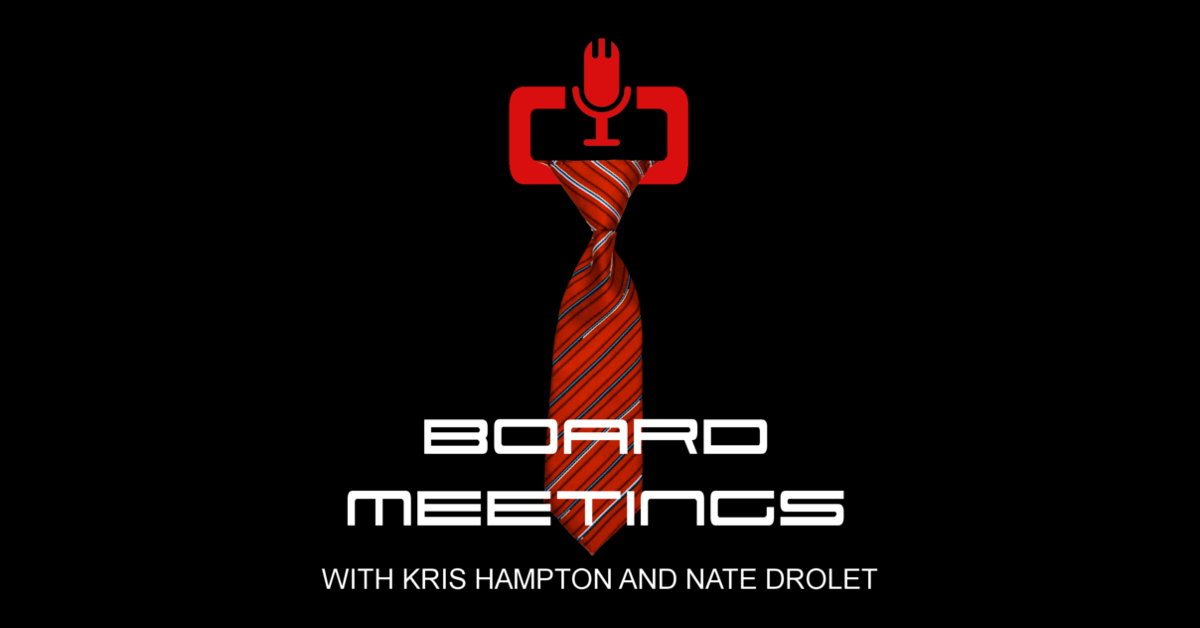




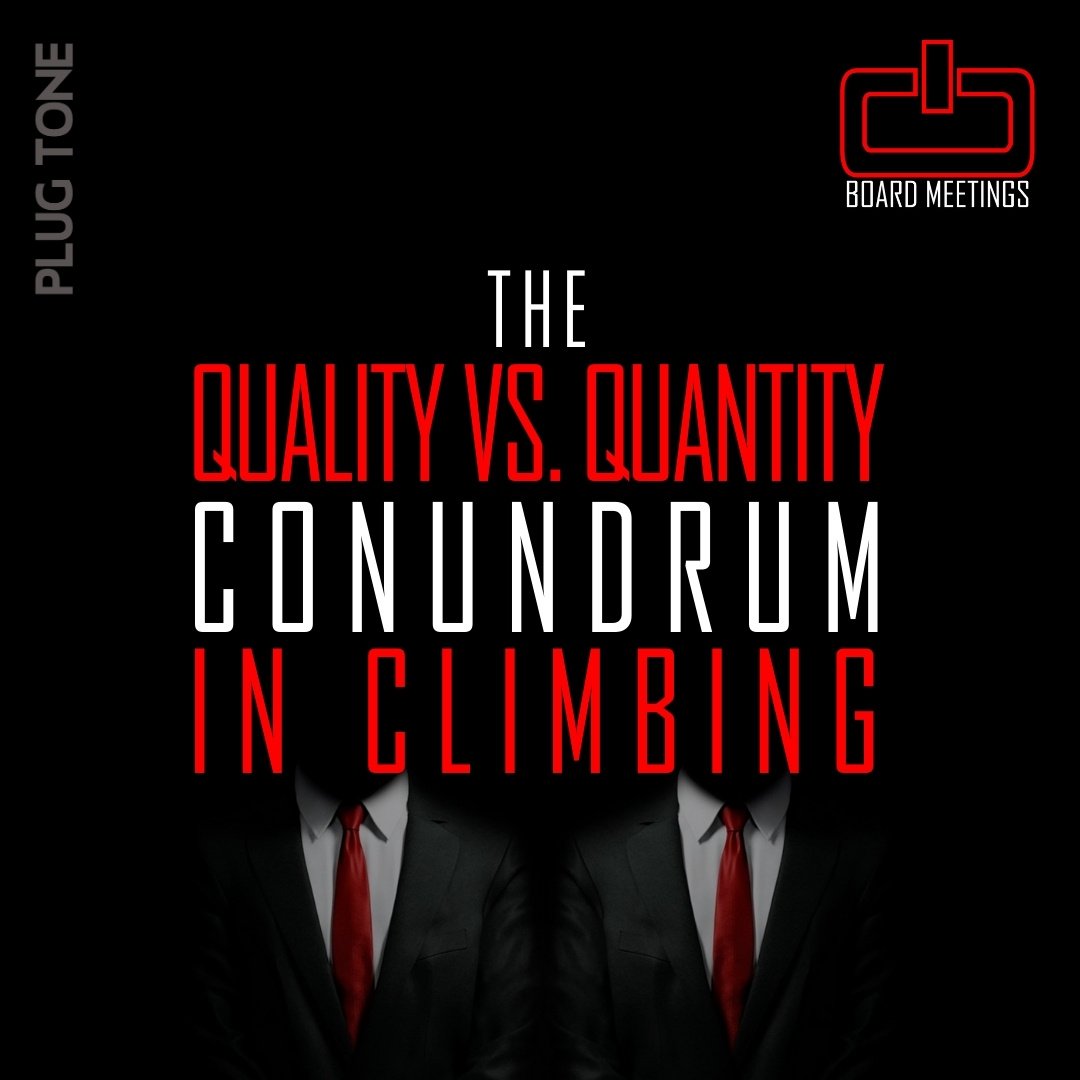

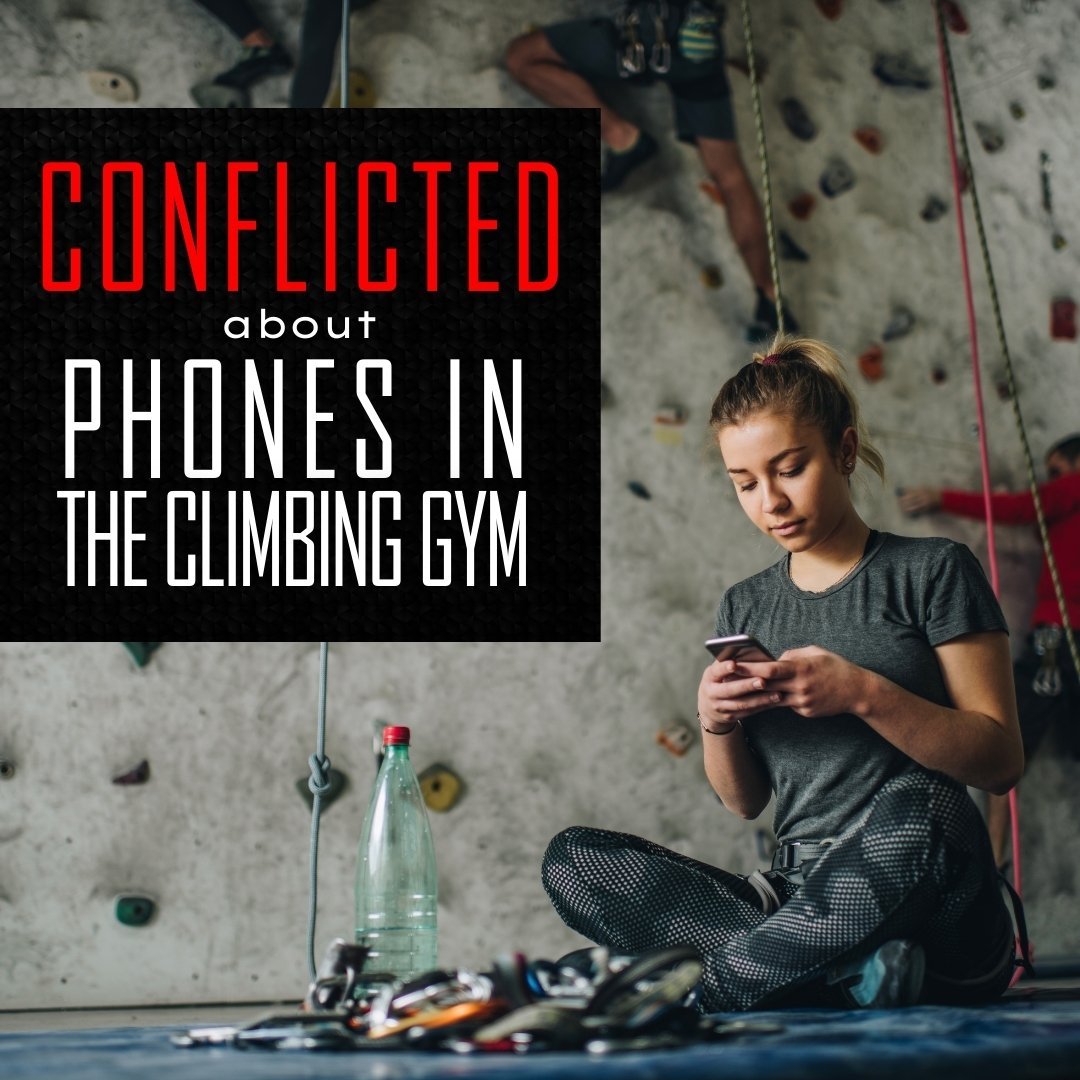
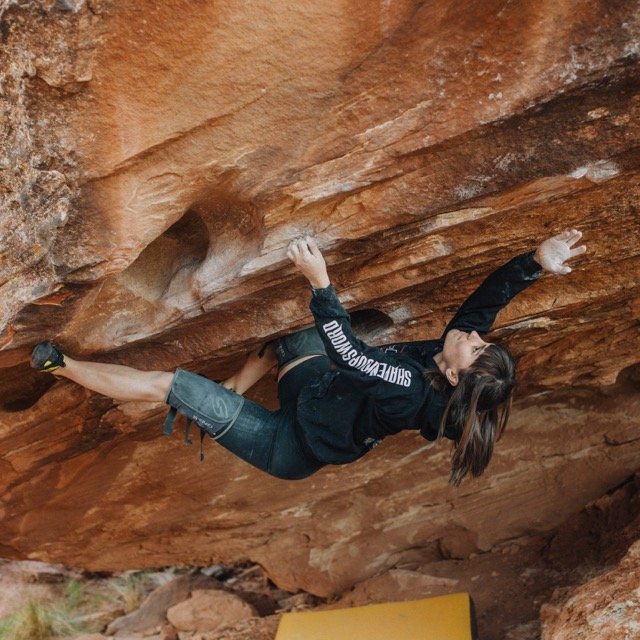

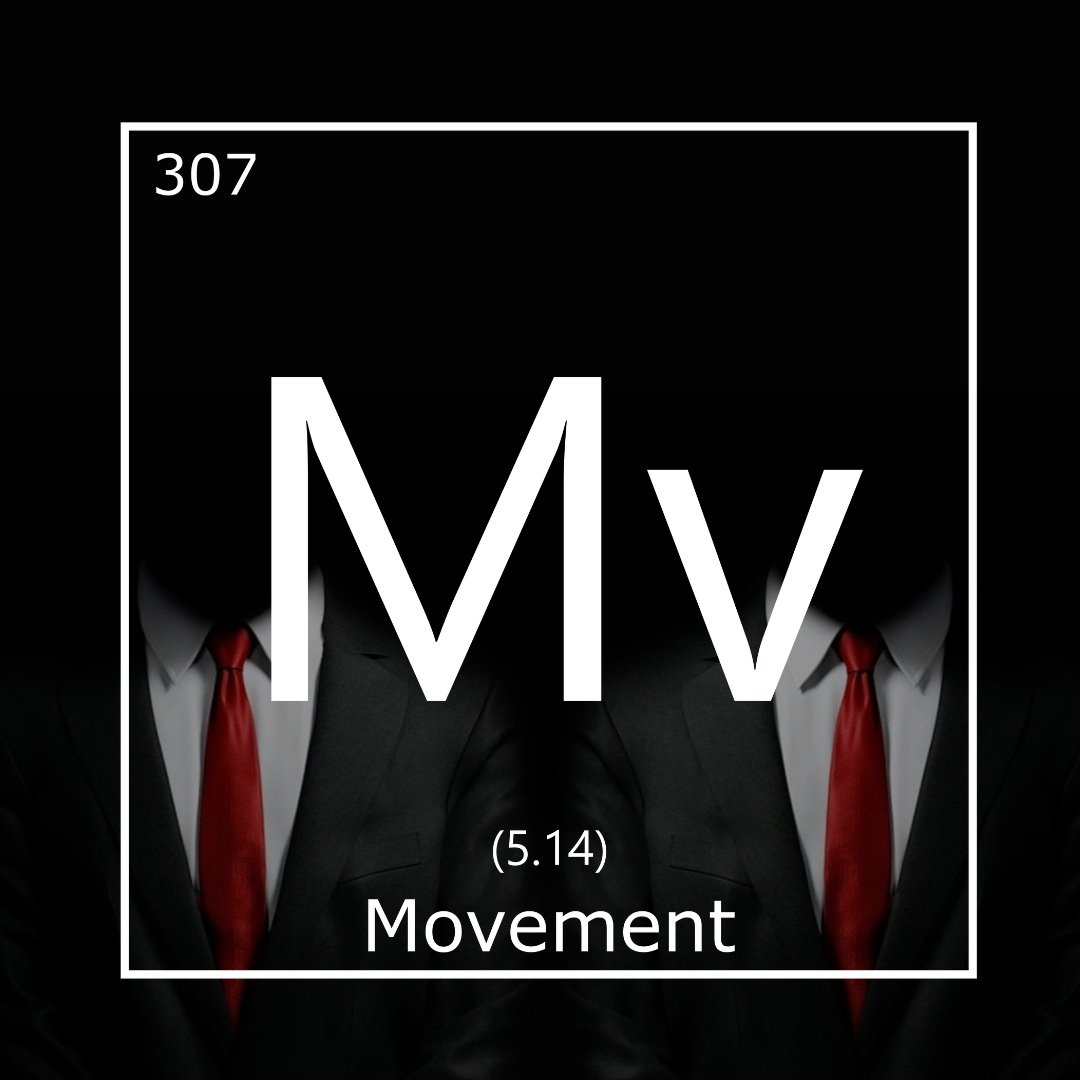
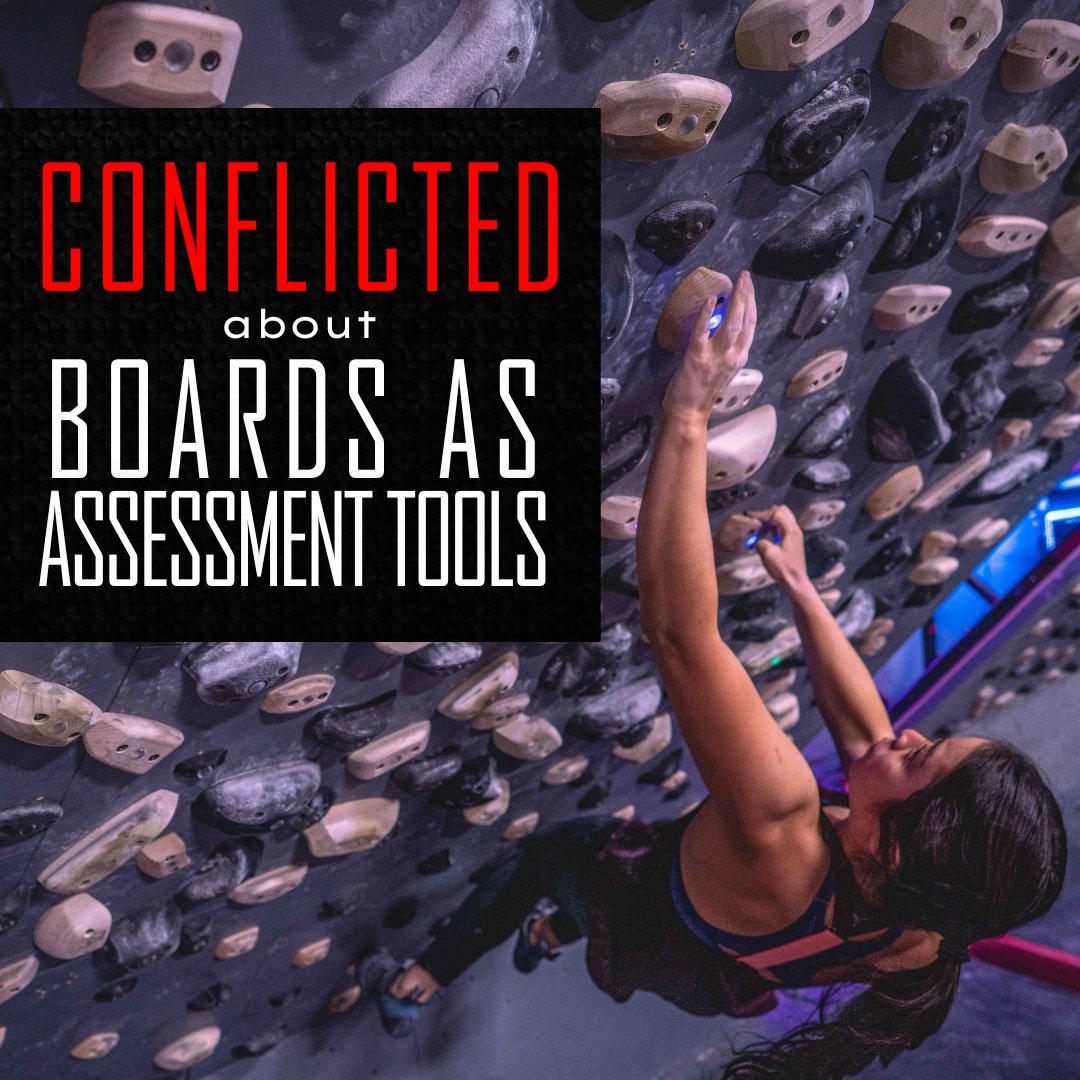
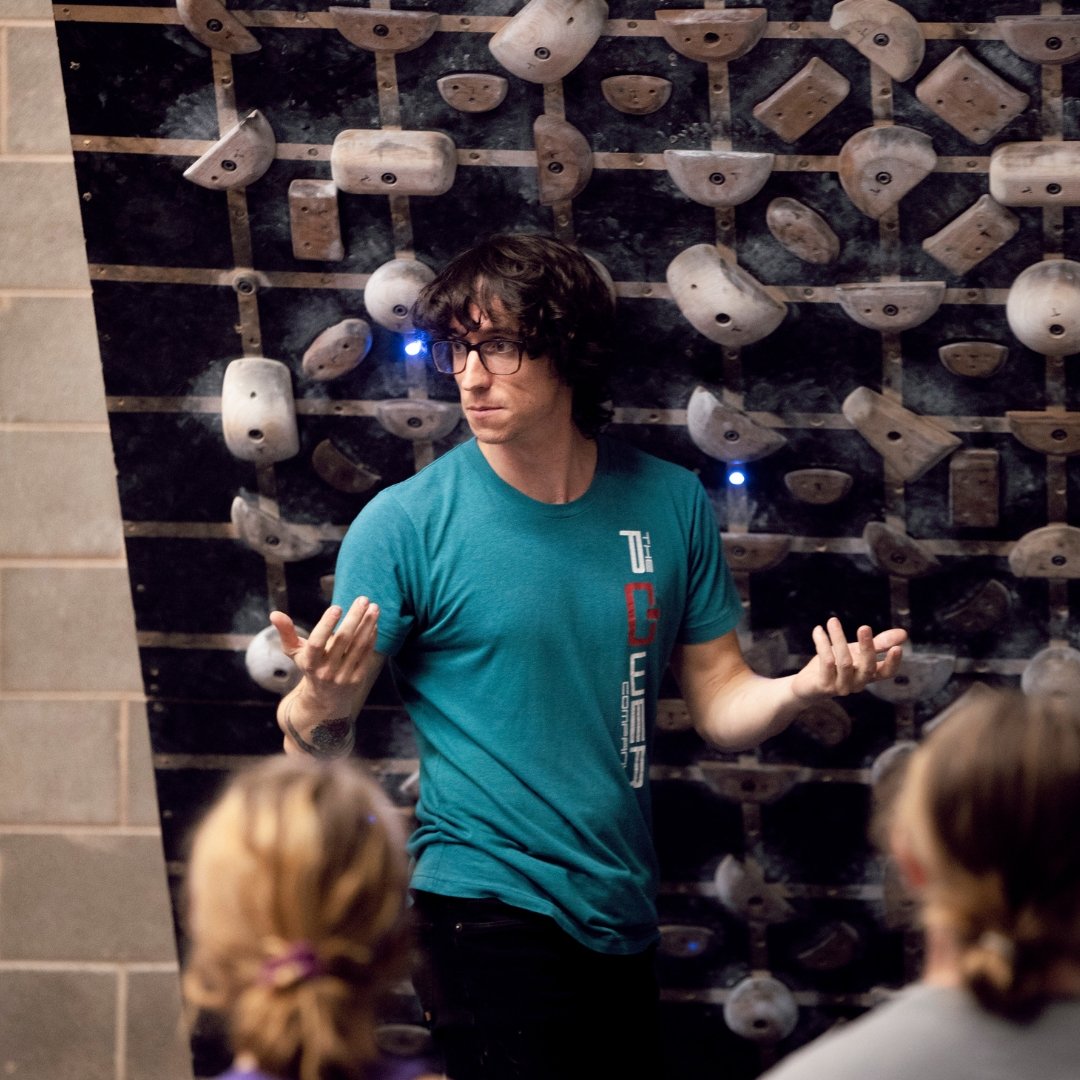
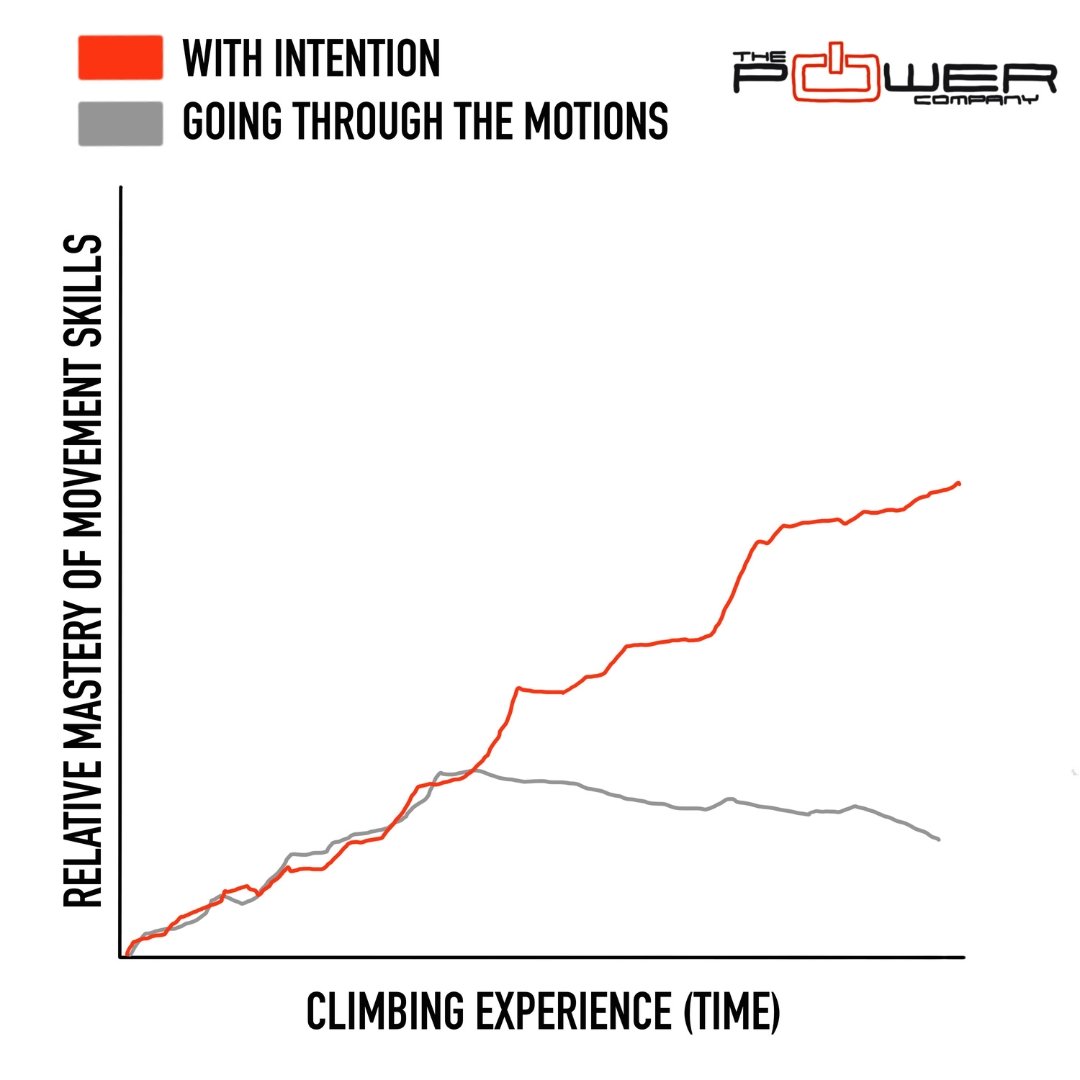




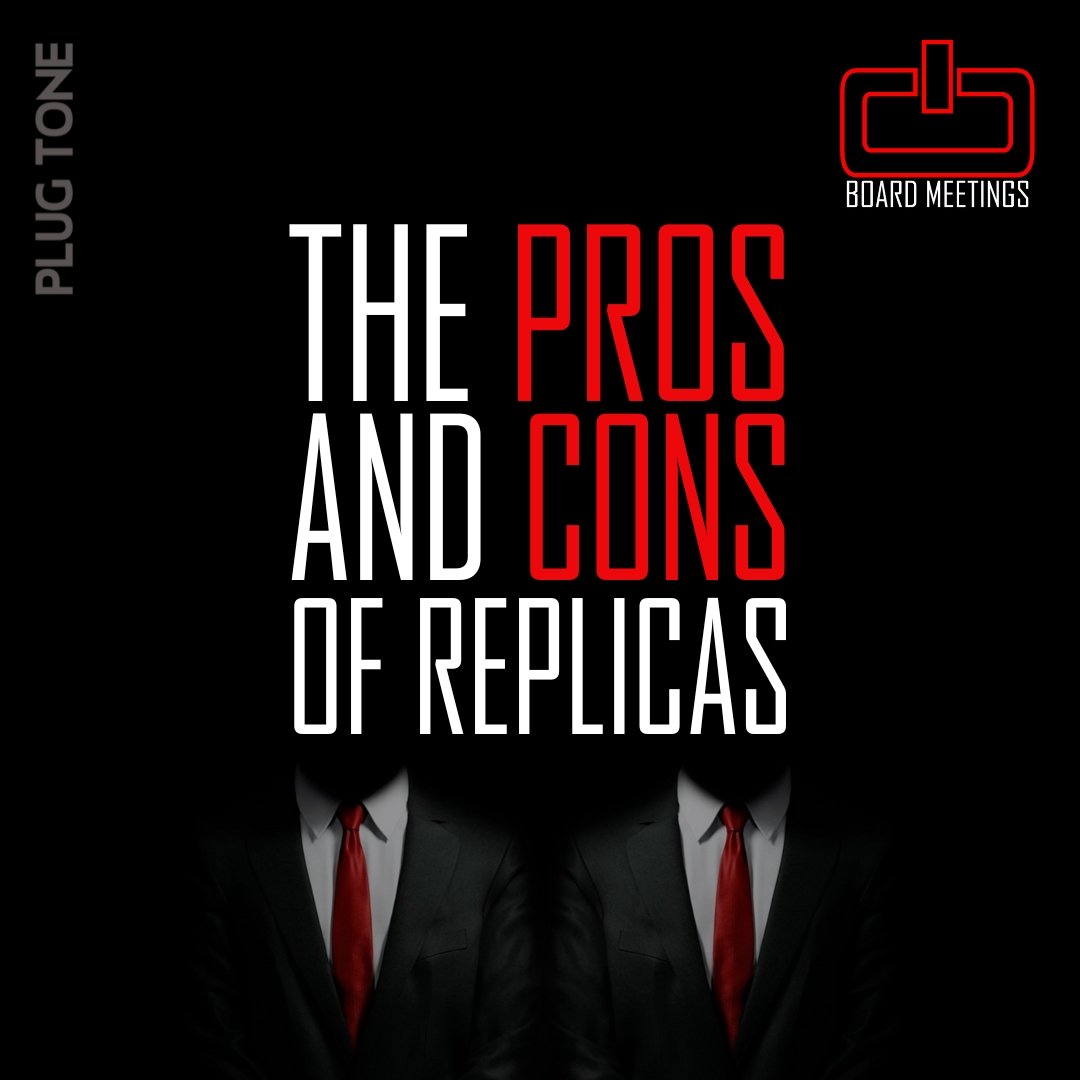


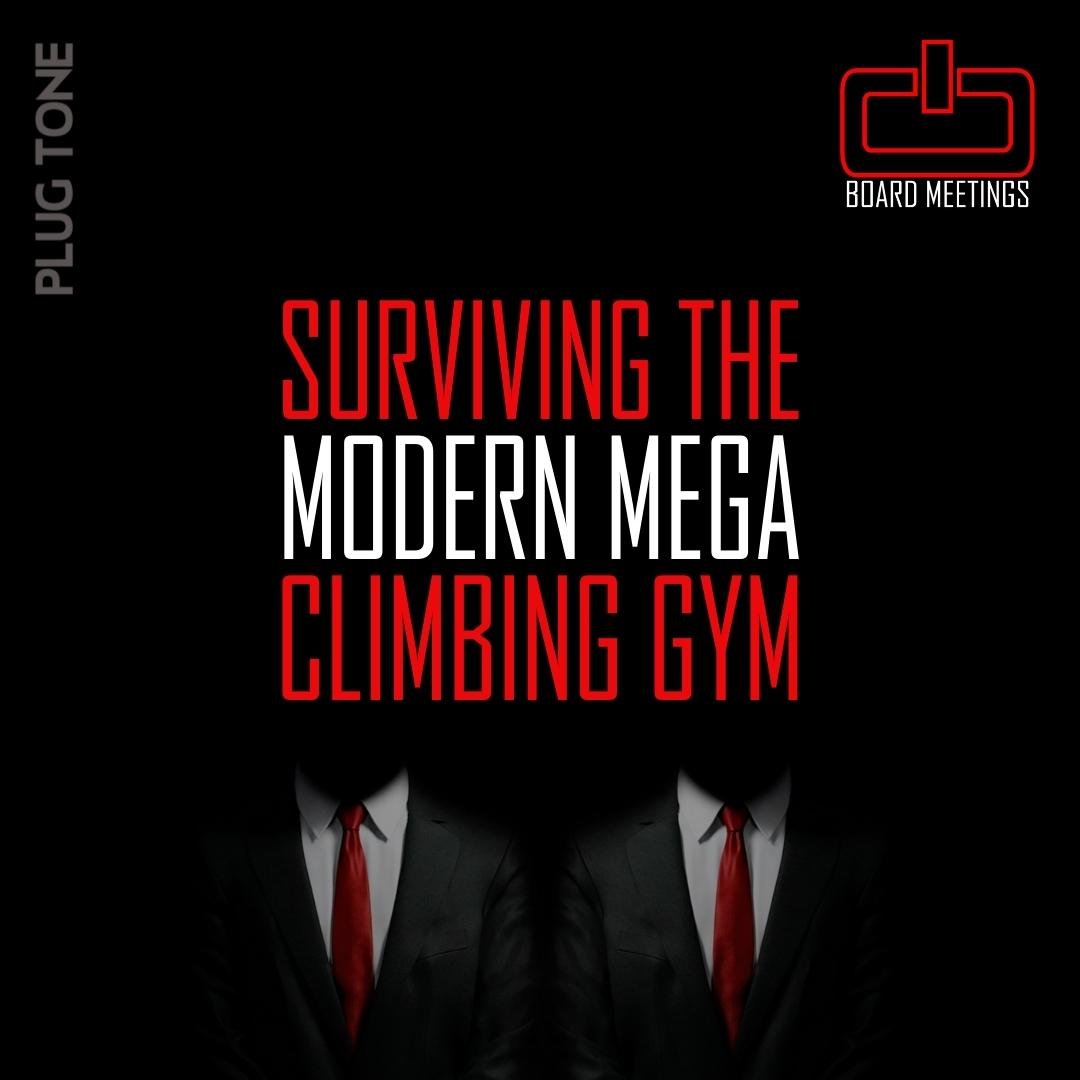


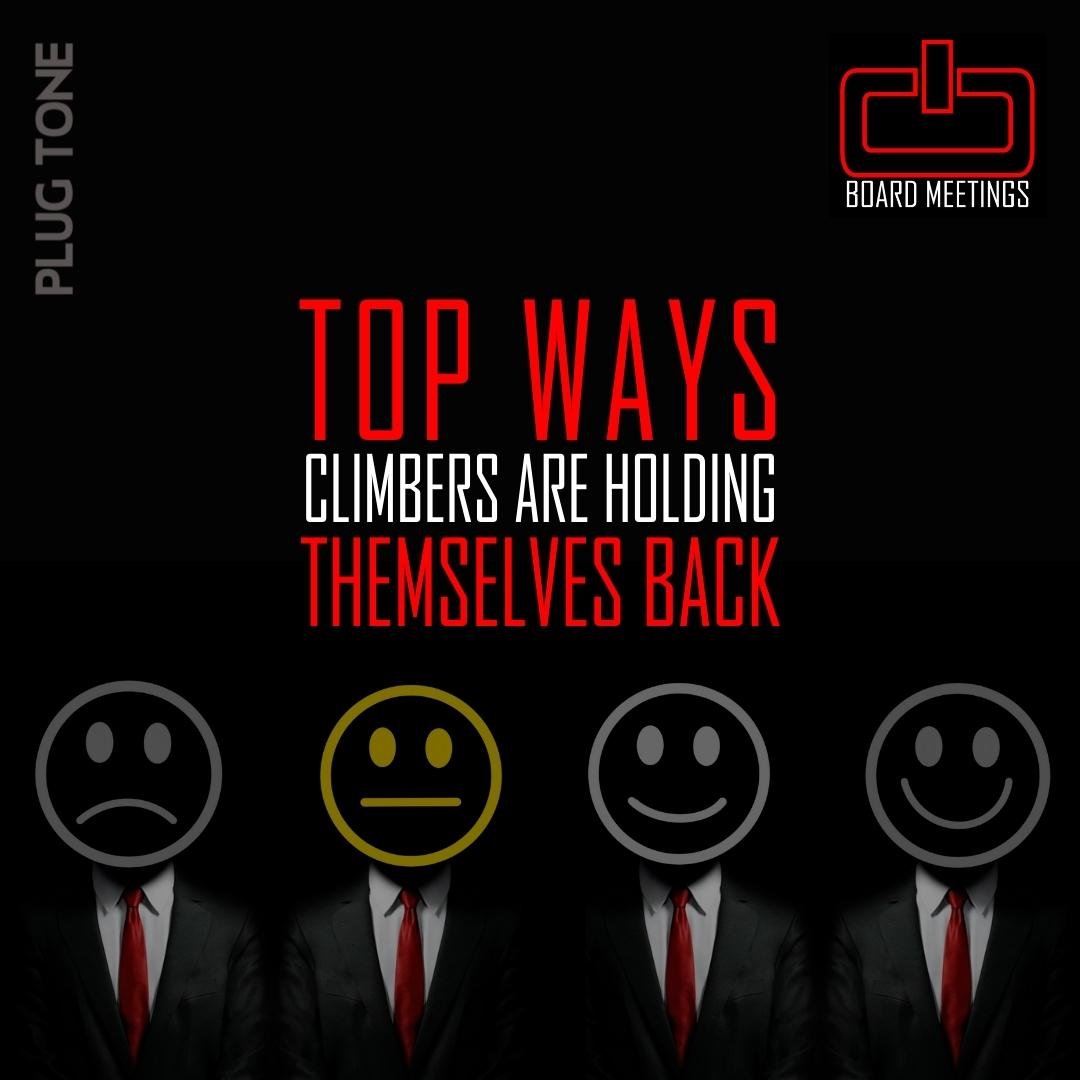



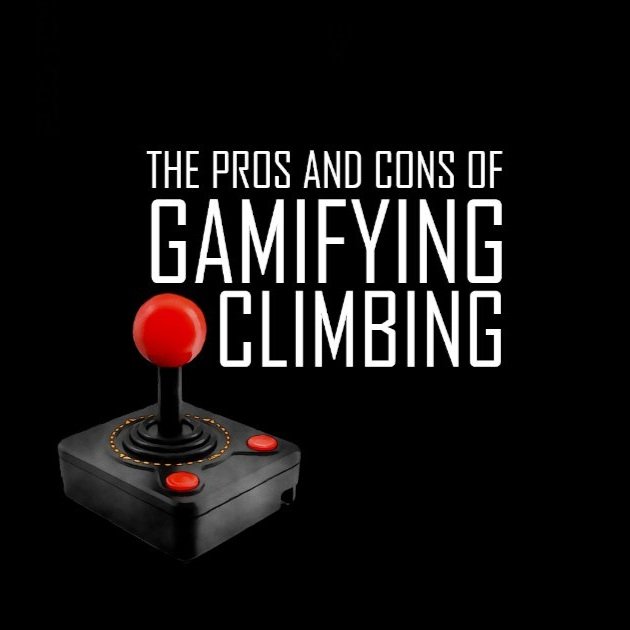

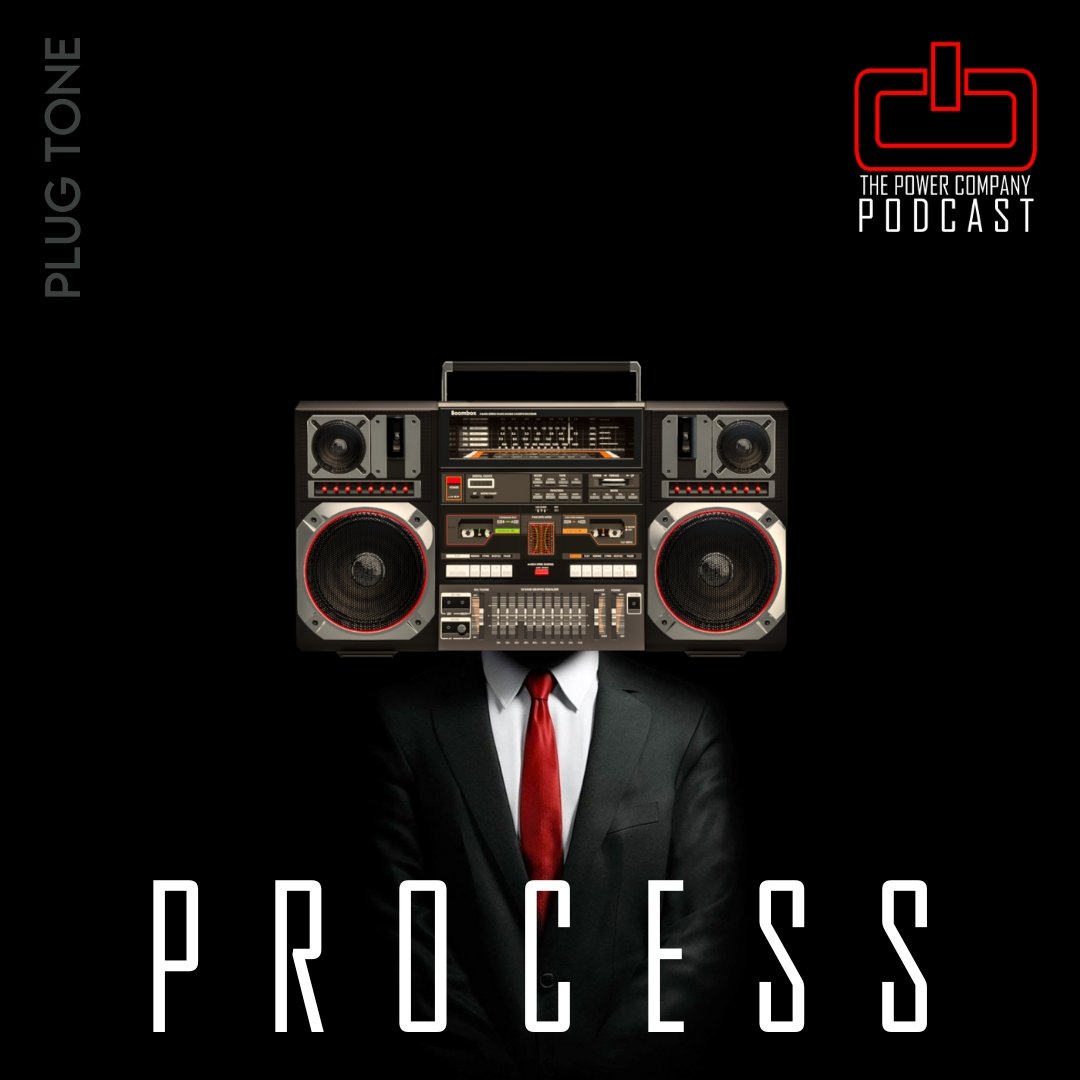




How do you know which is right for your situation?